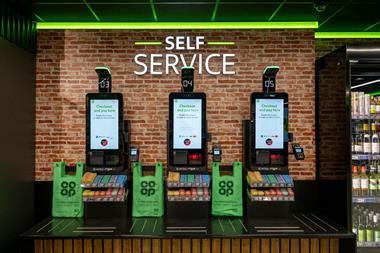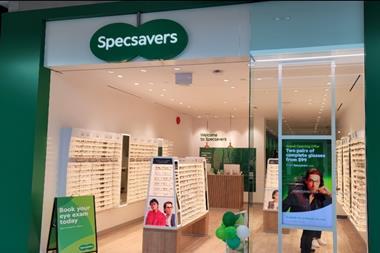Ocado is bullish about its plans to float, but with the online grocer yet to make a pre-tax profit, is the IPO a good deal for investors
Ocado last week pushed the button on its proposed Stock Market flotation, which it hopes will value the business at about £1bn.
The much-anticipated initial public offering (IPO) has been debated long and hard already, and has divided opinion into two camps - those who support a float and those who think it raises more questions than answers.
While nobody would argue that the online grocer - which delivers Waitrose products alongside branded products - is not loved by its customers, the debate centres on whether its model is a good buy for investors.
Ocado has delivered strong sales growth and is profitable at EBITDA level but, since being founded 10 years ago, it has yet to make a pre-tax profit.
So does Ocado have a convincing plan for future growth? Or will investors be left wondering when they will see any returns?
Ocado is going full steam ahead with its flotation plans, having appointed eight banks to advise. Goldman Sachs, UBS and JP Morgan Cazenove are taking the lead, with Barclays, Lloyds Banking Group, HSBC, Numis and Jefferies supporting.
The etailer is offering institutional investors, employees and customers who have spent more than £300 with the grocer between January 1 and June 24 the chance to buy shares.
Ocado hopes to raise £200m from selling new shares and existing shareholders - such as the John Lewis Partnership pension fund - may offload some of their holdings.
A float would turn Ocado’s three founders - former Goldman Sachs bankers Tim Steiner, Jason Gissing and Jonathan Faiman - into multimillionaires, raise cash for a second depot - or customer fulfilment centre as the etailer calls it - and provide investment for its existing warehouse at Hatfield in Hertfordshire.
The financials will be the first thing potential investors look at. When it announced its intention to float, Ocado also reported interim results for the 24-week period ending May 16.
Revenue was up 29% to £230m and EBITDA increased 181% to £8m. Ocado also cut its operating loss 63% to £2.7m. Average weekly orders were up 34% to 88,407 and, in the week beginning May 10, its weekly orders topped 100,000 for the first time.
Earnings potential
While Ocado directors are not permitted to say what future sales might look like until the prospectus is issued, they have said they believe that Ocado has greater EBITDA margin potential than its store-based competitors.
However, many analysts would have liked Ocado to have reached pre-tax profit before an IPO.
Shore Capital analyst Clive Black says Ocado’s EBITDA might reach £25m this year, but assuming the enterprise value is £1bn - and that figure has yet to be confirmed - that implies an enterprise value/ EBITDA multiple of 40 times.
He notes that Tesco trades at a multiple of seven times, and Sainsbury’s and Morrisons at six times.
Black says a multiple of about 10 times might be justified but to get to £1bn, Ocado would need to be clocking up EBITDA of about £100m.
He says: “I’d be more comfortable with a valuation of about £500m to £600m but that still gives them a lot of heat to materially increase EBITDA.
“We’re still slightly in the dark without the prospectus but the mutterings of £1bn are stratospheric. It has to be about pre-tax profits because after the tax man, that’s what’s left for shareholders.”
Some supporters believe Ocado should be valued in the same frame as etailers such as fashion giant Asos or Amazon. However, Black insists the comparison is not appropriate.
“Asos and Amazon deal with non-perishable goods and, as food requires multi-temperature vans, that means it is so much more expensive to operate,” he points out.
He adds that from a margin and profitability perspective, there are “profound” differences in the specification required in the supply chain “unless customers are happy to have Forman’s black cod shoved through the letter box”.
One analyst maintains investors should look at online penetration, rather than the difficulties of food home shopping. “Online penetration will reach 20% of the total market. Electricals is nearly there, clothing is high single digits and grocery is only 2%,” says the analyst.
The key issue for investors, the analyst continues, is whether Ocado makes sense over a three- to five-year period. He points out that online clothing is booming despite the difficulties around returns.
He adds: “On the surface it [Ocado] might look expensive but when you look at the sales multiples over time, when the first depot is operating at near 100% capacity then it becomes more attractive.”
Ocado chief financial officer Andrew Bracey points out that the strong sales momentum is “evidence that the Ocado business model is increasingly effective as the number of customers we serve grows and our efficiency and productivity increases”.
The second depot is integral to the investment opportunity. Ocado believes that a second depot in the Midlands, and even the possibility of a third further down the line, perhaps in the North, will enable the grocer to achieve scale, remove a layer of the supply chain and accomplish clear service and cost benefits.
But Evolution analyst Dave McCarthy questions the need for a second depot. He says: “Given the first facility can reach 66% of the UK population and that it is only operating at about a third of capacity, why does Ocado need an extra facility at this point?”
He points out that the cost of opening a second facility and running it below minimum efficient scale for a number of years could consign Ocado to continued losses for many years to come.
Reducing costs
One analyst says that Ocado’s expansion can’t be viewed in the same way as a traditional grocer: “When traditional grocers expand, there is the threat of cannibalisation, but with Ocado the model becomes more efficient.”
A second depot, and even third, will minimise the need for trunking to hubs and therefore take costs out of the business, the analyst claims.
The technology that Ocado has created in its depot is a key advantage to its offer. The IT systems are predominantly bespoke, as is much of the machinery, making the intellectual property valuable.
One analyst says that the first depot is capable of doing £1bn of sales, and that the second depot will be much more efficient as “a lot of lessons have been learnt along the way”.
The capacity of the second depot will also be increased over time, rather than all at once, to “create a clever ROI model”, says the analyst.
Ocado’s relationship with Waitrose is another moot point. The signing of the new 10-year deal, taking it to September 2020, eased some analysts’ minds. And there are strong reasons for Waitrose to partner with Ocado.
Ocado points out that its sales give Waitrose increased purchasing power, and Waitrose receives a sourcing fee for products sold by Ocado that are sourced through Waitrose.
However, McCarthy points out that Waitrose is still only about one eighth the size of Tesco in terms of food market share, therefore its buying terms are much weaker than Tesco. This gap, he says, will get wider as Tesco “pursues its relentless opening programme”.
He adds: “The Waitrose offer is limited and it lacks the all-round appeal of Tesco, while Ocado lacks the scale to develop a wide-ranging value added or discount sub-brand of its own.”
He says that while Ocado does have some own-label ranges, “developing a comprehensive, multi-tiered own-label range with wide appeal requires a lot of expensive infrastructure and takes years to complete”.
Furthermore, while supporters believe Ocado and Waitrose’s home delivery service WaitroseDeliver are complementary, others believe Waitrose will become an increasingly bigger threat.
From next summer, Waitrose will be able to operate in Ocado’s core market - within the M25 - and McCarthy says: “Right now, many consumers think Ocado is Waitrose. It remains to be seen what happens when Waitrose and Ocado go head to head for the core Waitrose customer.”
The Waitrose conundrum
McCarthy says he would like to see some independent research on Ocado’s customer demographics and penetration, and data on how customers behave when faced with a choice of Ocado and Waitrose.
Supporters of the float point out that Ocado has evidence that in some areas where its penetration is high, the Waitrose stores in the same area receive a boost to sales, from top-up shoppers.
And while Ocado has a premium offer, principally targeted at the As and Bs demographics, its Tesco price match proposition on branded goods aims to widen its reach.
“With the expansion plans into new areas, it will have to undertake marketing exercises to make sure shoppers understand its value as it is not that widely known for being competitive on price with Tesco,” says one analyst.
Ocado has outlined that it could also grow further through new product categories such as baby, health and beauty, and kitchenware, and replicating the business model overseas. It could also license out its intellectual property. However, its first priority is likely to be growth in core grocery in the UK.
Ambrian analyst Philip Dorgan says overseas could “lead to another 10 years of losses” and that new product categories “create more complexity”.
However, one analyst says new product ranges will only ever be complementary and overseas “is more a case of cutting and pasting the depot via a joint venture” rather than a huge investment.
For some, it is a matter of timing. Why does Ocado want to float now when the market is volatile and other retail IPOs such as New Look have been pulled?
Collins Stewart analyst Greg Lawless says: “Over the past eight years the business has burnt £350m of cash and we wonder why the existing shareholders are not willing to invest further to get the business to a break-even level first before flotation.”
But Bracey argues “now is the ideal time in Ocado’s development for it to fund the growth and expansion of the business by raising capital in a flotation”.
Another analyst says the etailer must develop in order to create efficiencies and “it was always going to become a public company at some stage”.
The analyst says some early investors, such as John Lewis Partnership, will realise some of their assets but “the prospectus will no doubt show some investors want to increase their holdings, and while the founders may sell small percentages they’re certainly not cashing in”.
So will investors buy into the Ocado model? The detail in the prospectus - expected imminently - will reveal more, but some have suggested if the IPO does not get away, John Lewis Partnership will scoop up Ocado at a cheaper price.
Others argue that, with eight banks advising, it would be staggering if Ocado’s float did not succeed. Whatever the outcome, Ocado has provided the retail sector with one of the most talked about potential IPOs in memory.
Ocado in numbers
2002
year it was launched
88,407
average weekly orders
£230m
sales for 24 weeks to May 16, up 29%
£8m
EBITDA for 24 weeks to May 16, up 181%
6%
of orders come through its iPhone app
20,000
number of products sold
4,300
number of Waitrose own-label products sold


























No comments yet